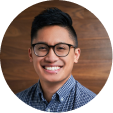Free UX Design Course
Dive into UX design with our free starter course. Transform your creative ideas into user-friendly solutions.
Launching a career in UX design can be challenging, especially when you consider the steep learning curve and whether or not you have a development and design background. If you don’t have a design background, then you may be wondering about what the field requires and how to build a career as a UX designer. What skills do you need to get started? How can you get better at UX design?
You’ll find the answer to these questions, along with a lot of other useful information about UX design, in the guide below.
What Is UX Design?
UX design enhances user satisfaction by improving usability, accessibility, and pleasure in the interaction between the user and a digital product. This ensures that your users have an enjoyable experience interacting with your company, its services, and its products.
UX design involves improving customer satisfaction through effective technology use, simplicity, psychology, creativity, and other skills. UX designers typically have an eye for color, layout, images, and branding. They are likely to focus on details of the product’s appearance as well as other areas like service design, product structure, and user research.


Become A UX Designer. Land a Job or Your Money Back.
Master Adobe XD, Figma, and Sketch. Work 1:1 with an industry mentor. Build a portfolio. Land a job — or your money back.
What Makes UX Design Hard To Learn?
It can be challenging to learn UX design for several reasons, including:
- Degree of difficulty. The skills needed to become a successful UX designer are fairly advanced, even for people who have a bachelor’s or master’s degree in design-related subjects. In addition to design expertise, you should be well-versed in research and data collection, storytelling, and presentation skills.
- Changing careers. The requirements of UX design may be very different from what you do in your current profession. If your current job is far from design-related, this shift could prove challenging. However, dedication to learning and taking a few courses should make the process easier.
- It can be challenging to find resources. Although there are plenty of UX design-related resources available online, aspiring learners find it challenging to find and access the tools and resources they need. New trends and updates in tools and software are constant and it’s difficult for beginners to find a definitive answer on what they should be using. Not to mention, not all online content is created equal and it takes time and knowledge to get a feel for what’s trustworthy. That leads to many people seeing UX design as a difficult field.
How Long Does It Take To Learn UX Design?
Becoming a UX designer isn’t necessarily a long process. It usually takes two to four years to become a UX designer, even without a bachelor’s or master’s degree. You can take an introductory design course and then hone your skills through a UX/UI design certification course.
If you have formal education in the design or development fields, you can learn the fundamental aspects of UX design in a shorter time, such as a year or a few months.
This can be enough to land you an entry-level position where you’ll continue to study, learn from your surroundings, and develop your skills. Being a constant learner is essential to staying valuable and relevant within the field.
How To Get Started With UX Design
If you already have a bachelor’s or master’s degree in design and development, you can go ahead and take an advanced course or certification to polish your skills and improve your resume. But if you’re a beginner, here’s what you need to do to get started.
-
Build Your Foundation
-
Utilize Free Sources
-
Take a Course
-
Ask for Help
Build Your Foundation
Build your foundation in UX design by learning about design basics, including composition, typography, color theory, and the user experience design process. You can do this by reading books on these topics or taking online courses. There are plenty of tutorials and articles online about the basics of user experience and how to apply it to your designs.
You should also do the following:
- Start creating an online portfolio to showcase your work
- Understand foundational UX design concepts, like accessibility, equity-focused design, and user-centered design
- Identify the job responsibilities of UX designers
Utilize Free Sources
There are many free online resources about UX design. You can watch video tutorials on YouTube or follow the journey of a UX designer on websites like Medium and Dribbble. Alternatively, you can look for free tech e-books on interaction design, information architecture, usability testing, visual design, graphics, component design, and prototypes.
Take a Course
Once you’ve built a foundational base, take an online UX Design course to learn from industry experts and understand how to apply your knowledge to real-life situations.
A UX design course will help you develop design thinking, enabling you to engage and observe the users you’re designing a product for. It also equips you with a proper thinking process for ideation and prototyping.
As a designer, producing usable work that meets business goals is the best way to ensure a bright future. Learning the roles of a user experience design team and how they work will help you understand what you need to grow as a UX designer.
Ask for Help
Discuss your dreams of becoming a UX designer with people who have experience in the field. This will help you learn more about what’s happening in the industry, and how you should proceed. Since these folks have already made a career in UX design, they’re better equipped with the right information to answer your industry-related questions. Plus, they could help you avoid the mistakes they made when they entered the field.
How To Get Better at UX Design
Here are some ways to improve your UX design skills to remain competitive and ensure job progress.
Find a Mentor
A mentor can help you improve your user interface design skills and provide you with valuable feedback. They can help you get better at creating effective user experience designs people would love to use.
Remember that learning from a mentor doesn’t end when you finish your course or UX design bootcamp. It’s an ongoing process because even the best designers will continue to learn over time.
Build a Portfolio
Your portfolio represents who you are as a UX designer. Before you begin applying for jobs, build a portfolio that showcases the best work you’ve done and the breadth of projects you’re capable of tackling. You can create a portfolio website with free web hosting services like WordPress or Squarespace if needed, but a professional-grade portfolio is always worth the investment. The way you present your portfolio as a designer will impact how viewers respond to it, and a paid tool with no advertisements or design limitations will do a much better job of allowing your work to shine.
Stay Up-to-Date With New Tools
Make sure you’re knowledgeable about new UX design trends and tools, along with their usage. With new tools released frequently, you must be up-to-date on the latest trends to create better designs and improve user experience.
Find a Specialty
Are you more inclined towards UX research, or would you prefer working as a UX writer? After taking a course and building your foundation, you can decide which specialty you’re interested in. Some options include:
- UX researcher
- UX developer
- UX writer
- Information architect
- Usability analyst
Focus on Your Soft Skills
Besides your core UX design skills, it’s also important to hone soft skills like communication, problem-solving, and critical thinking. UX design is a team effort, and you’ll need to communicate effectively with other designers, clients, and stakeholders to get your work done.
Problem-solving skills are essential as they allow you to develop solutions for various problems that may arise during the design process. Critical thinking will help you evaluate designs critically and create better solutions.
Get To Know Other Design Students
Jeffrey Surban
UX Designer at Citi
Talayeh Motameni
Senior UX Designer at United Airlines
Sadie Rubio
UX Designer And Researcher at Lumea
UX Design as a Career
Now that you know how to learn UX design, let’s look at the career itself.
What Are the Requirements To Get Into UX Design?
The basic requirements to get into UX design include:
- A strong understanding of design principles—such as balance, typography, colors, and contrast—clearly demonstrated in a professional portfolio.
- Knowledge of UX design tools such as Figma, Sketch, Invision, Balsamiq, etc.
- Knowledge of common software such as Adobe Photoshop and Illustrator.
- Experience in user research, including quantitative and qualitative data collection.
- Understanding of brand design, including brand palettes, style guides, and logos.
- Knowledge of wireframing and prototyping.
It used to be the case that hiring managers asked for a degree in graphic design, human-computer interaction, or a related field. But now, it’s very common to see successful UX designers who don’t have a degree in the subject. It’s more important to have the required skills and demonstrate your dedication to UX design, all of which you can learn from a bootcamp.
Is UX Design a Good Career?
UX design is a great career option, as it offers stable growth projections. The demand for UX designers is surging and will only increase in the future as more users rely on digital products to complete tasks every day. According to the US Bureau of Labor Statistics, the jobs for UX designers are estimated to grow by 8%.
Does UX Design Pay Well?
UX design is a high-confidence job, and designers earn $115,743 per year on average in the United States. Even the UX designers on the lower end of the job scale can make up to $81k per year.
A survey showed that 84% of product designers got a salary raise in the last year or two. Professionals also expect a 20% salary hike in the coming years.
What’s the Difference Between UX and UI Design?
UX design focuses on things that affect the user’s journey to solve a problem—on-screen or off-screen, positive or negative. UI design, on the other hand, focuses on the aesthetics, branding, layout, and hierarchy of the product’s user interface. Due to the different natures of the design process, a UX designer focuses on the conceptual aspects while a UI designer is concerned with tangible elements.
Since you’re here
If you want to work in design, you can. It’s that simple. With our UX Bootcamp, we’ll help you launch your design career in 9 months or less. Browse our free UX salary guide to see what you could be making







